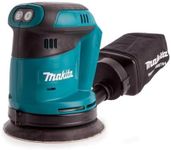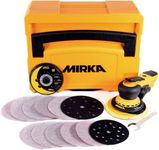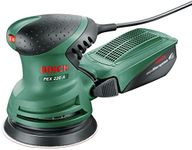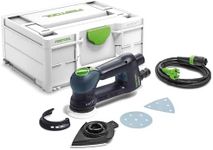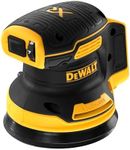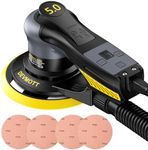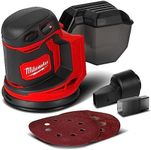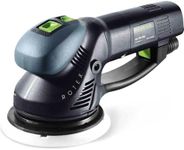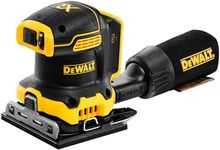Buying Guide for the Best Orbital Sanders
Orbital sanders are versatile tools used for smoothing surfaces, removing paint, and preparing materials for finishing. When choosing an orbital sander, it's important to consider the specific tasks you'll be using it for, as different models offer various features that can enhance your work efficiency and quality. Understanding the key specifications will help you select the right sander that meets your needs and preferences.Power SourceThe power source of an orbital sander can be either corded or cordless. Corded sanders are typically more powerful and are ideal for heavy-duty tasks where consistent power is required. They are best suited for stationary work environments. Cordless sanders offer more flexibility and portability, making them suitable for smaller projects or when working in areas without easy access to power outlets. If you need to move around a lot or work in different locations, a cordless model might be more convenient.
Motor PowerMotor power, measured in amps for corded models or volts for cordless models, determines the sander's ability to handle tough materials and prolonged use. Higher motor power means more efficiency in sanding and faster material removal. For light sanding tasks or occasional use, a lower power sander may suffice. However, for frequent use or working with hard materials, a higher power sander will be more effective and save time.
Orbital SpeedOrbital speed, measured in orbits per minute (OPM), affects how quickly and smoothly the sander can work. Higher speeds are suitable for rapid material removal and larger projects, while lower speeds are better for precision work and finishing tasks. If your work involves detailed sanding or delicate surfaces, opt for a sander with adjustable speed settings to tailor the speed to your specific needs.
Pad SizePad size refers to the diameter of the sanding surface. Common sizes are 5 inches and 6 inches. Larger pads cover more area and are ideal for big projects, while smaller pads offer more control and are better for detailed work. Consider the size of the surfaces you'll be working on; larger surfaces benefit from bigger pads, whereas intricate or small areas are easier to manage with smaller pads.
Dust CollectionDust collection systems help keep your workspace clean and reduce airborne particles, which is important for health and visibility. Some sanders come with built-in dust bags or can be connected to external vacuum systems. If you work indoors or in environments where dust control is crucial, look for models with efficient dust collection features. This will not only keep your area tidy but also improve the quality of your work by reducing dust interference.
Vibration ControlVibration control is a feature that minimizes the amount of vibration felt by the user during operation. Excessive vibration can lead to discomfort and fatigue, especially during extended use. Sanding with less vibration also results in smoother finishes. If you plan to use the sander for long periods or have sensitivity to vibration, choose a model with good vibration control to enhance comfort and precision.
